In this paper, we focus on our experience of harmful false information about health in Kenya. We identify major trends and discuss the contextual factors influencing mis- and disinformation in the country. We show that while there has been a surge in false information linked to Covid-19, this is not new to the country, with health myths that lead to vaccine hesitancy having a long tail, for example. Finally, we suggest areas that fact-checkers can look into to counter harmful health mis- and disinformation.
Introduction
False information about health causes real harm to people’s lives. Africa Check has been fact-checking public statements about health in Kenya since late 2016.
In our first two years of operation in the country we focused on claims made by public figures, institutions or the media that we judged would cause the most harm if left unchallenged. In that period our experience was mainly of misinformation, with many journalists, people and entities publicly sharing content that they likely did not know was false.
This ranged from government officials making inaccurate claims about the prevalence of HIV/AIDS in adolescents at major international meetings[1] to poor fact-checking by both local and international media, with cited statistics often being either deficient[2] or non-existent[3].
Our experience of disinformation (deliberately falsified information) in that period included dangerous claims about vaccines, with significant opposition fanned by conservative groups to tetanus vaccines[4] for example. Churches play a major role in Kenyan society and were quite instrumental in seeding this. We have seen a resurgence of disinformation around vaccines due to the Covid-19 pandemic, including claims[5] that the continent would be used for trials.
There has also been broader public awareness about disinformation in recent years, resulting in more people flagging questionable health content to us. This has given us greater insight into the types of false information shared in the country, from the occasional hoax to outright fabricated content and miracle cures for cancer[6] and other diseases of concern to Kenyans.
But we have noted two key trends in the country that are pre-eminent:
- The use of false context (including false connection and clickbait headlines)
- Manipulation of genuine content
Decontextualisation often involves the use of genuine imagery re-shared as new, whether during everyday discussions of public health or during a major news event such as the Covid-19 crisis. Certain media, such as pictures and videos, have an intrinsic ability to make text appear more believable.
Manipulation is mainly doctored or tampered-with content. It is also notable that the two types of disinformation provide a low “barrier to entry” compared to say, deepfakes — or even shallowfakes.
What the two have in common is the use of genuine content as a starting point. But there is also an added element of profit-seeking involved where believability is used to scam people or drive traffic to websites. This is rather surprising as we expected that, for reasons of structural deficiency around healthcare, including affordability, most false information would be about cures.
However, it isn’t completely dissociated. The use of genuine content as a jumping-off point provides a sort of beachhead strategy into the other forms of disinformation mentioned, whether being screenshots appearing to be from credible sources that push false information to those that rely on heuristics to stoke emotion and drive virality.
This is important from the perspective of both amplification and fact-checking, because studies show that content with a kernel of truth tends to be most shared[7], and is also best countered by acknowledging this[8].
Contextual factors influencing mis- and disinformation in Kenya
A number of factors are at play. All broadly coalesce around financial, political, and social and cultural motivations.
- Of the 9.9 million people who use the internet in the country, 6.3 million — nearly two-thirds (64%) — are young people aged between 15 and 34[9]. But digital literacy remains low, with a notable digital divide where many are offline. Our research[10] also shows that while all demographics are vulnerable to false information, older people and people with lower levels of education in general are at increased fallibility.
- Youth unemployment is also high[11], with many young people seeking to leverage the country’s increased connectivity to gain from a growing digital economy. This informs why false health information often involves scams seeking to make profit by duping potential job applicants, sites looking to make money off advertising and those people looking to sell hope to the desperate through false and untested cures.
- There is also low investment in quality public healthcare, while private hospitals are largely still out of reach for most. In many families in Kenya, a cancer diagnosis is a sure path to financial ruin. This makes many Kenyans particularly vulnerable to unproven cures being peddled on social networks.
- Culture also plays a role. Worldviews in Kenya tend to lean towards the communal rather than the ideological, and are very experiential. Community leaders for example have a lot of influence on society, and beliefs play an elevated role in how information is processed. False cures and anti-vaccination positions pushed by figures of authority are some of the ways this is manifested.Related to this is an inherent elevation of social consensus information. There is an innate belief that because a certain piece of information is being shared in groups Kenyans are members of (such as Whatsapp groups), it is being done in good faith and that it also is “pre-verified” and accurate. This informs why authority figures successfully share false information — such as a prominent senator who claimed[12] soya causes breast cancer, or Nairobi’s incumbent governor claiming[13] that alcohol is a ‘throat disinfectant’ against the new coronavirus.
- There is also a distrust of authority, though not of experts, giving alternative voices such as bloggers and influencers a growing audience. These invest their time capital into the system for a return in social capital (likes and follows), and in algorithmic capital. Facebook groups and trending topics are for example quite influential in Kenya, and the players use this mainly for economic capital, in a sort of permissive feedback loop well outlined by Danil Mikhailov[14].
Examples of mis- and disinformation in Kenya
Incorrect public pronouncements not based on, and/or misrepresenting verifiable data
Nairobi governor Mike Sonko includes alcohol in food packs to poor families, claiming that “alcohol plays a very major role in killing the coronavirus or any sort of virus”.
False cures/prevention regimens
False cancer cures from a mysterious ‘Dr Gupta’ — that cancer will “disappear” if patients stop eating sugar, drink lemon juice before meals for three months, and take spoonfuls of coconut oil morning and night — go viral on Facebook.
Hoaxes and scams
Job openings at WHO for a high salary: applicants were asked to submit their personal information, with enough information being asked for to initiate identity theft.
Manipulated and/or out-of-context videos and images
‘Every Kenyan to receive 100K due to the lockdown on corona’
Conspiracy theories and predictions
“Barack Obama is asking Africans not to accept vaccines that will come from America and Europe”.
Covid-19 disinformation in Kenya
Africa Check has looked at false information about Covid-19 mainly through the lens of disinformation, with content where the intent could be safely assessed as not meant to mislead or cause harm left out. Since March 2020 we have maintained an updated “live guide”, with decontextualized content — imagery and articles — forming the bulk of the entries for Kenya, for reasons discussed elsewhere in this report, key being the low barriers to entry.
Hoaxes, fabricated content about non-existent events and entities, half-truths, where truths swim in the same waters as misleading claims, and scams with a financial motive are also key players in the Kenyan false information ecosystem. The prevalence of half-truths is especially effective — infusing false claims with plausible ones adds to the overall believability.
Cures and vaccines are the next main types of pandemic disinformation. Many claims about cures come with a profit element in the background, such as buying a “natural” product or visiting a practitioner. Claims about vaccines are often caught up in the country’s strong conservative beliefs or protests about Africans being guinea pigs.
How false information about health in Kenya compares internationally
Like in many other countries, the false health information that is shared in Kenya tends to be that which evokes emotional responses. But there are some differences.
A lot of health mis- and disinformation in the Global North tends to be grounded in ideology, but there is little evidence of this in Kenya. This is a reason why harmful false information that is Kenya-specific originates on social and professional media, as opposed to, say, the anonymous web or conspiracy communities as is often the case elsewhere.
Relationships also come before purpose in Kenya. Mis- and disinformation that taps into these networks — such as families and communities — is quite widely shared.
Further, due to how information leaches into the community (community meetings are crucibles for the individual to act on (false) information), disinformation often has more impact — for example a lot of stigma around Covid-19 patients has been experienced in Kenyan communities, sometimes with fatal outcomes.
Conclusion
The entire information ecosystem — government, the media, big tech, fact-checkers and audiences — has a role to play in countering health mis- and disinformation.
But there are some areas fact-checkers can look into:
- Disinformation in particular in Kenya very often thrives by leveraging on relationships, because a lot of people have an emotional rather than rational or logical relationship to information.
- Indigenisation of fact-checking is important: Our fact-checking work in 11 other African languages generated a lot of interest because it helps break accurate information out of the urban ivory towers where it is still very much concentrated. Others like the BBC have gone into localisation of content in much more detail[15].
- More research into how individual/societal differences such as culture affect responses to false health information is needed. We need to better understand the circumstances that make fact-checking have any impact on politicians and how to make it a durable effect. How can we persuade the alcohol-peddling Nairobi governor to check himself?
- Should we cloak up like mis/disinformation peddlers? For example, we know that adding an image to a tweet can make the difference between a fact-check that gets seen, and one that is outranked by more attention-grabbing posts. We’ve in the past debunked false health information with video, and we are already sending audio to our audiences. Should it be a standard? This is very much a point of debate[16].
We collaborated with 53 partner organizations worldwide to design and carry out our 2024 elections projects. We extend special gratitude to our lead partners in Brazil, Mexico and Pakistan, whose work we highlight in this essay.
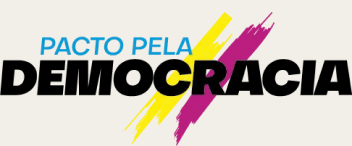
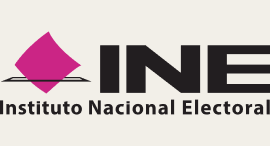

The 2024 elections projects featured in here would not have been possible without the generous support of these funders.
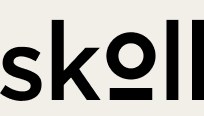
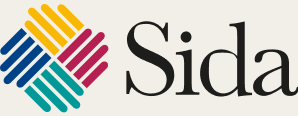

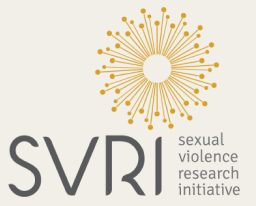
Footnotes
- Kenya National Bureau of Statistics (2020). 2019 Kenya Population and Housing Census. Volume IV: Distribution of Population by socioeconomic characteristics. Nairobi: KNBS
References
Authors
Words by
Africa Check is the continent’s leading independent, nonpartisan, fact-checking organisation. Established in 2012, we have four offices across the continent: in Johannesburg (South Africa), Nairobi (Kenya), Lagos (Nigeria) and Dakar (Senegal). Since 2012, we have fact-checked more than 1,500 claims in English and French, focusing on areas from education and health to elections and the economy. Our goal is to raise the quality of information available to society across the continent. Ultimately, we aim to strengthen democracy and improve life outcomes.






